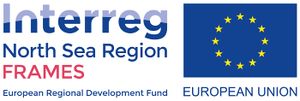Geen bewerkingssamenvatting |
Geen bewerkingssamenvatting |
||
| Regel 67: | Regel 67: | ||
|Start date=2016/10/01 | |Start date=2016/10/01 | ||
|End date=2020/04/30 | |End date=2020/04/30 | ||
|Summary=In FRAMES, we look at how Multi-Layer Safety, or MLS, can improve the overall resilience of areas, communities and authorities in | |Summary=In FRAMES, we look at how Multi-Layer Safety, or MLS, can improve the overall resilience of areas, communities and authorities in 16 pilot areas. Via a learning evaluation approach pilots are compared and transnational focus groups are organized to evaluate and learn from transnational (intermediate) results. This learning process allows us to generate new insights, support future decision making and show innovative solutions to improve society’s ability to cope with flooding. FRAMES runs from October 2016 till April 2020. | ||
|Show summary=Nee | |Show summary=Nee | ||
|Show navigation tree=Nee | |Show navigation tree=Nee | ||
Versie van 18 sep 2019 09:43
FRAMES - Flood Resilient Areas by Multi-Layered Safety
FRAMES stands for Flood Resilient Areas by Multi-layEred Safety. Traditionally, structural and static solutions were the preferred management option to defend against flooding. However, it is more and more recognized that protection alone will not be enough to make areas climate-resilient. It is also imperative to decrease the effects of flooding and look at spatial planning and disaster management as well. This so-called Multi-Layer Safety (MLS) approach is thus based on three layers: 1) protection, the primary dike system; 2) sustainable spatial planning that decreases the loss should a flood occur; and 3) disaster management, the organizational aspects related to a flood event. Together, these three layers can be tailored to local areas in order to minimize flood damage.
Floods have always been and will continue to be part of our daily reality. In fact, floods are among the world’s most common and most devastating natural hazards and have affected millions of people in Europe since the beginning of this century. Changes in our climate are increasing the risk of river and coastal flooding because sea levels are rising and rainfall patterns are becoming more extreme. Increasing flood risks call for more innovative approaches to minimize the impacts of such events. Therefore, five countries bordering the North Sea Region, Denmark, Germany, the Netherlands, Belgium and the United Kingdom, are joining forces in the Interreg North Sea Region project FRAMES.
This video above was shot during the FRAMES Days in March 2019. The Jade University of Applied Sciences and the company Kueste und Raum organised an excursion through the pilot area Wesermarsch for all FRAMES project members. The entire European delegation met with representatives of different aid organisations such as the fire brigade, the German Red Cross, the THW and the German Armed Forces in Nordenham.

